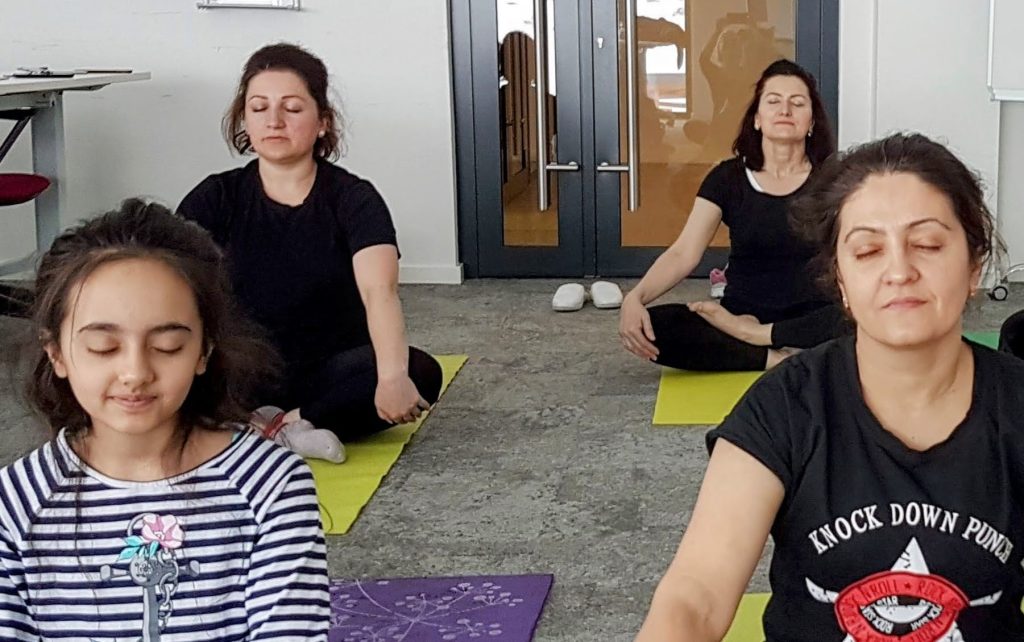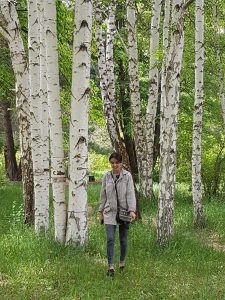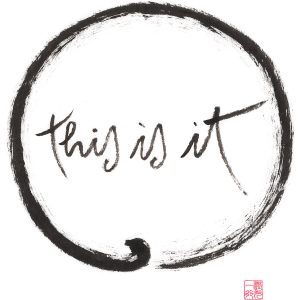2 Starting with a Mindful Moment

“The core invitation of mindfulness is for you to befriend yourself. That means recognizing and inhabiting your own intrinsic wholeness and beauty in the only moment any of us ever has—namely this one.”
The word mindfulness is the nearest approximation of the sanskrit word “sati,” which simply means to “remember to observe.” In other words, it is the practice of coming back to the bare bones of reality as revealed by our senses.
I start all sessions, both on and offline, with a moment of silence, breathing together, noticing our thoughts, bodies and emotions and allowing ourselves to fully arrive in our learning environment. It is a way of making the transition from our busy lives into a more reflective state of mind where we are ready to explore our inner reality and learn together. Just as we prepare the workshop room to feel lovely and welcoming, a mindful moment invites us to settle our bodies and minds.
Throughout the world mosque calls, church bells and gongs remind people to worship. The chimes I use to start sessions call us to drop into a place of depth and integrity where we are engaging in the important work of self-discovery. Most often, the mindful moment only lasts for one or two minutes, but there is often a palpable shift in the energy of the room as people slow down and become fully present.
A mindful moment is the method that I have found most useful for creating a moment of calm and readiness to learn and listen, but you might have other practices that are more in alignment with your culture or community.
Purpose
Beginning a workshop or learning event with a mindful moment allows participants to calm their nervous systems and make a conscious transition that prepares them for transformative learning experiences. It also exposes them to strategies they can use in their daily lives to settle their minds and be fully present to the everchanging texture of their life.
Learning Objectives
Participants will
- Define the term “mindfulness.”
- Experience the art of paying attention to information that comes through their senses.
- Discuss what it means to pay attention, “non-judgementally.”
Activity Directions
Set-Up: Chairs in a circle or horseshoe.
Here are some different variations on starting a workshop session with mindful awareness.
Example One: Following the Breath
The most basic form of mindfulness involves just sitting and being with our experience and noticing as thoughts, feelings and sensations arise and dissolve.
Directions:
- Ask the participants how they would define the word “mindfulness.” After a few people give their impression, say that it is a word used in many contexts, but the one we are going to focus on is most simply defined by Dr. Jon Kabat-Zinn: “Mindfulness is awareness that arises through paying attention, on purpose, in the present moment, nonjudgmentally.”
- Ask what the group thinks he means when he says that we are paying attention “nonjudgementally.”
- After the term is discussed, invite the participants to experiment with an attitude of observing and welcoming whatever they are thinking or feeling. Their task is to look at each flicker of experience with curiosity and acceptance.
- Ask everyone to find a comfortable way of sitting, and let them know that you will be sitting together in silence for 3 minutes. Their only task is to notice their breath and when they lose themselves in thoughts or feelings, to come back to noticing their breath.
- Ring the chimes and sit quietly for three minutes.
- Ring the chimes again.
- Ask people for any comments or questions on their mindful moment.
Resources Needed:
Chimes or an internet approximation of a peaceful sound.

ExampleTwo: Chocolate Meditation
Example 3: Walking Meditation
 Sitting still is very difficult for some people. An option can be paying attention to our feet as they touch the ground. During the week-long summer institute courses in Kyrgyzstan and Tajikistan, we always started each day with mindfulness, and sometimes that involved walking together in nature.
Sitting still is very difficult for some people. An option can be paying attention to our feet as they touch the ground. During the week-long summer institute courses in Kyrgyzstan and Tajikistan, we always started each day with mindfulness, and sometimes that involved walking together in nature.
Invite participants to notice their feet connecting with the ground and what they see and hear in the world around them. Ten minutes of silent walking allows people to slow down .
Getting out of the building and connecting with the sky and trees can be a beautiful way to start a workshop. However, walking meditation can also be inserted anywhere in a schedule where it seems like it might be good for people to calm their nervous systems and turn inward.
Handout: What is Mindfulness?

“Peace is present right here and now, in ourselves and in everything we do and see. Every breath we take, every step we take, can be filled with peace, joy, and serenity. The question is whether or not we are in touch with it. We need only to be awake, alive in the present moment.”
— Thich Nhat Hanh,
Peace Is Every Step: The Path of Mindfulness in Everyday Life
Mindfulness in Western Countries
- Mindfulness is a practice that has existed across different cultures, especially in Asia, as a spiritual practice (not necessarily religious) for thousands of years.
- In Western societies, mindfulness has become popular since the 1970s when many westerners visited Asia to study mindfulness.
- Mindfulness is now adopted as a psychological intervention to address health challenges and promote health.
Many Definitions Of Mindfulness
- Thich Nhat Hanh 2,3,4, (2008): “I define mindfulness as the practice of being fully present and alive, body and mind united. Mindfulness is the energy that helps us to know what is going on in the present moment… Mindfulness brings concentration. When we drink water mindfully, we concentrate on drinking. If we are concentrated, life is deep, and we have more joy and stability. We can drive mindfully, we can cut carrots mindfully, we can shower mindfully. When we do things this way, concentration grows. When concentration grows, we gain insight into our lives.”
- Jon Kabat-Zinn (1994) defines mindfulness as “paying attention in a particular way: on purpose in the present moment, and non-judgmentally” (Book-Wherever You Go There You Are, p. 4). Sources and References
Source:
- Handout adopted from Wong, J. P. (2016). Acceptance and Commitment to Empowerment Workbook. Toronto, ON: Community Alliance for Accessible Treatment.
- Thich Nhat Hanh is a renowned Vietnamese Zen master, poet, and founder of the Engaged Buddhism movement. He was nominated by Martin Luther King, Jr. in 1967 for the Nobel Peace Prize in 1967 for his efforts in ending the Vietnamese War. Quote from his essay: Nhat Hanh, T. (2008).
- The moment is perfect. Lion’s Roar: Buddhist’s Wisdom of Our Time. Available: http://www.lionsroar.com/the-moment-is-perfect/
- NĥátHạnh, T. (2008). The miracle of mindfulness: a manual on meditation, Rider.
- Jon Kabat-Zinn is well known around the world for adopting and integrating Buddhist meditation into health care. He is Professor of Medicine Emeritus and creator of the Stress Reduction Clinic and the Center for Mindfulness in Medicine, Health Care, and Society at the University of Massachusetts Medical School. Quote from his book: Kabat-Zinn, J. (1994). Wherever you go there you are. New York, NY: Hyerion Books
Source: Hand-out taken from Pressbooks Champs In Action Training Manual which has well thought out and tested activities and resources developed for the Community Champions HIV/AIDS Advocates Mobilization Project.
